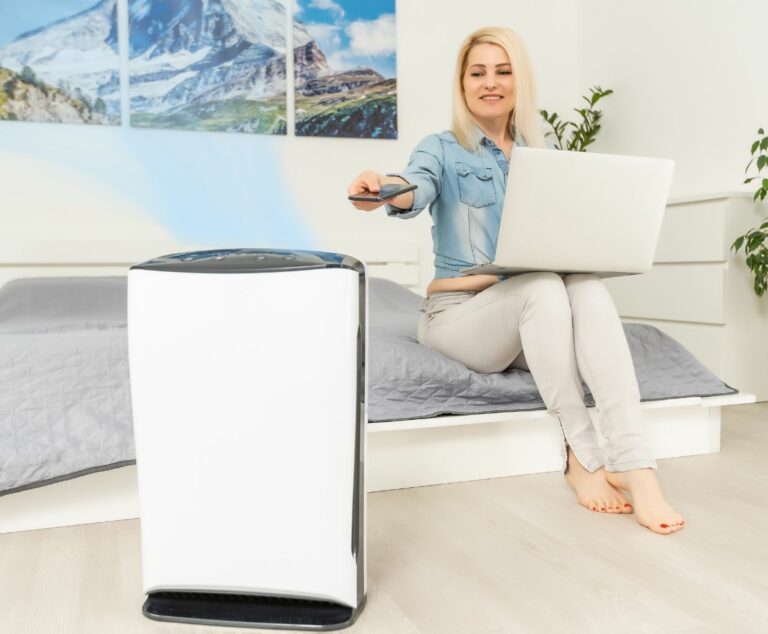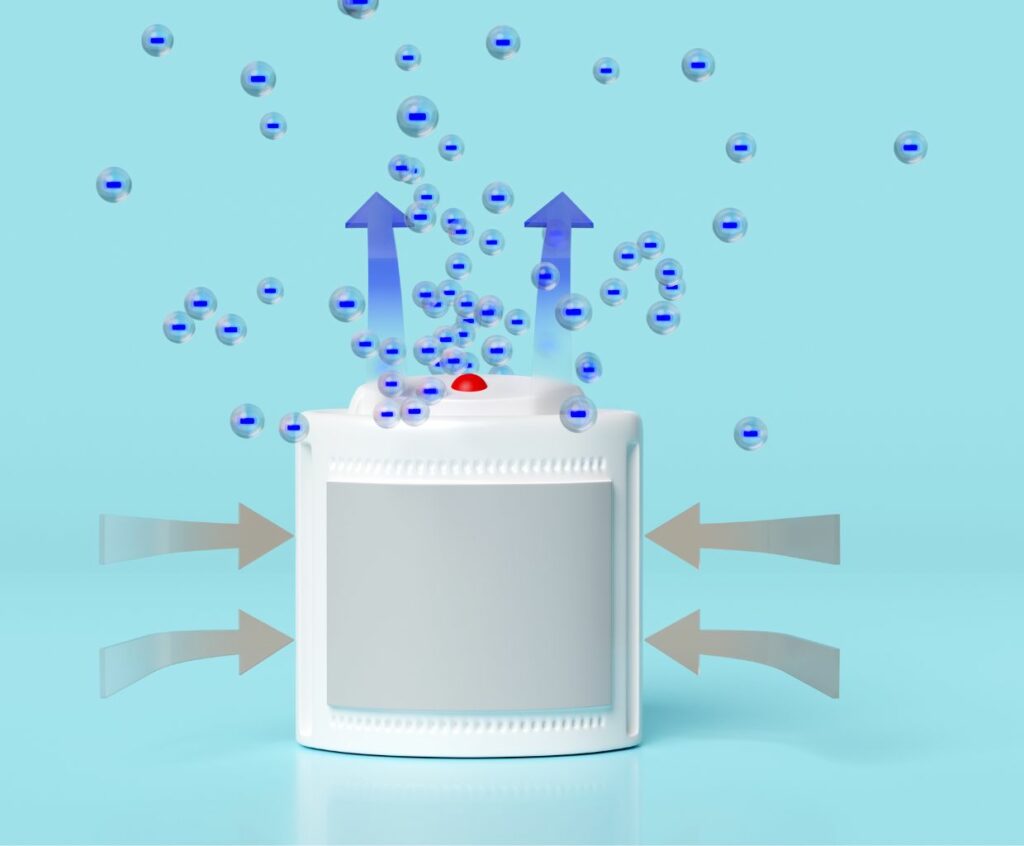Air Scrubber vs. Air Purifier – Which One Is Better?
As a homeowner, you want to ensure your family is breathing clean air when they’re in your home. Protecting your family from contaminants and allergens in the air is essential, especially if you have asthma or allergies.
One way to improve indoor air quality is by using an air scrubber. An air scrubber is a filtration system that removes contaminants from the air making it cleaner and safer to breathe.
Content Summary
What is An Air Scrubber?
Air scrubber is a device used to remove pollutants from indoor air. They are used to reduce the concentration of particles in the air. The Air scrubber is not a purifying device. A true HEPA filter, for example, would remove bacteria and viruses from the air, but the standard for an air scrubber is much lower. An air scrubber can remove dust, smoke particles, and other airborne pollutants. Still, it will not eliminate heavy-metal contaminants or other gaseous compounds that could harm anyone.
An air scrubber, also known as an air filtration machine, is a filtration system that removes contaminants from the air making it cleaner and safer to breathe. Air scrubbers are more effective than air purifiers. Air scrubbers use HEPA filter technology to remove particles as small as 0.3 microns in diameter. This is about 100 times smaller than the width of human hair! They are also effective at removing dust mites, mold spores, and pollen from the air you breathe.
Air scrubbers are used in various settings, including hospitals, schools, and homes. They’re also used in cleanrooms and other areas where it’s important to minimize air contaminants. An air scrubber can effectively remove particles, such as dust mites, pollen grains, mold spores, and pet dander.
To understand HEPA filters.
To understand what an air scrubber is, it’s essential first to understand HEPA filters. HEPA stands for high-efficiency particulate air. These filters are made up of a dense weave of fibers and have an internal structure that can trap even the tiniest particles in the air, such as dust and pollen. HEPA filters can remove 99.97% of particles as small as 0.3 microns from the air using one filter, making them especially suitable for use in medical facilities where cleanliness is a priority.
Air scrubbers use HEPA filtration technology to remove pollutants from the surrounding environment while still being safe enough for people to breathe in without experiencing any adverse side effects from breathing contaminants like mold spores or bacteria that may be present in their homes or workplaces (for example).
What Particles does The Air Scrubber Remove?
Dust mites are microscopic insects that feed off dead skin cells found on humans, pets and anywhere people live or sleep. Dust mites are a common trigger for asthma and allergies. Dust mites can be found in mattresses, pillows, carpets, and upholstered furniture.
The most common way to prevent dust mites is to clean your bedding regularly (at least every week). The safest way to do this is to use a vacuum with a HEPA filter which will trap 99% of all particles, including dust mites! If you want an even better solution, then consider using an air scrubber like the one we recommend here:
A good quality air scrubber can help remove allergens from the air, such as pollen spores, mold spores, dust particles, pet dander bacteria, etc., thus preventing them from being breathed in by anyone who comes into contact with it!
Most allergists recommend running your air scrubber at least 12 hours daily to ensure the cleanest possible air for those with allergies or asthma.
Air scrubbers can be used with a vacuum cleaner to remove particles from the air. The air scrubber should be run for at least 12 hours daily and cleaned regularly to ensure that it will continue to clean your home’s air. Air scrubbers are not a substitute for good housekeeping; they must be used along with other cleaning devices like vacuums and HEPA filters to maintain the clean indoor air quality in your home or office. If you have allergies or asthma, you may need an air purifier for additional relief from allergens like dust mites, pollen, mold spores, and pet dander.
Air Scrubber vs. Air Purifier
Many mechanical features and technologies in today’s HVAC systems (Heating, Ventilation, Air Conditioning) can help improve indoor air quality.
The following is a list of some of the most common methods used:
- Filters – Most systems use filters to keep dust, dirt, and other particulates from entering your home through your air ducts or vents. The filters should be changed regularly, depending on how often you use your system (for example, if you live in an area with a high pollen count during springtime) or whether you have pets inside with long hair (they shed).
- Air ducts – If you live in an older home that doesn’t have sealed-off ducts to every room, this will let air flow through them freely, leading to more dust build-up over time. While it’s possible for homeowners with limited budgets (or little interest) in this project would instead leave things untouched–and let the problem grow even more significant–there are other options available as well, such as using a specialized filter called electrostatic precipitator which sucks contaminants out directly from their source without requiring any maintenance whatsoever after installation!
Air Cleaner – Product Used Most Often To Purify Air
The consumer product used most often to purify air — and the one most requested when buying a new home or remodeling an older home — is the air cleaner.
Air cleaners come in a wide range of sizes and styles, from large, expensive models that are powerful enough for industrial use to inexpensive desktop models that filter small amounts of dust from your home. The type you choose depends on how much space you want to clean, how much money you want to spend on your system (which will determine the size and power of the unit), and who will be using it (you alone or others as well).
Air cleaners can cost anywhere from $20 for an inexpensive desktop model up to thousands for industrial models meant for professional use only.
- Read Also: Air Purifiers Reviews
Air Cleaners and Air Scrubbers
An air cleaner or scrubber can significantly reduce allergy symptoms for homes with allergy sufferers by removing many of the particles that cause discomfort.
Air cleaners and air scrubbers remove particles from the air. Air purifiers also remove particles from the air but don’t effectively remove allergens, bacteria, and viruses. In addition to removing these airborne pollutants, an air cleaner can reduce odors and chemicals.
Air scrubbers are more effective than air purifiers at removing allergens like dust mites because they use a higher vacuum power (measured in microns per second) than most home-use systems. A lower micron count means fewer contaminants in your home’s indoor environment; this can help reduce allergy symptoms for those who suffer from them.
Air Scrubber vs. Air Purifier – Conclusion
If you have allergies or asthma, an air cleaner or scrubber can significantly reduce allergy symptoms by removing many particles that cause discomfort.
It is important to note that these machines are not a cure for allergies; instead, they are an additional tool for combating symptoms.





